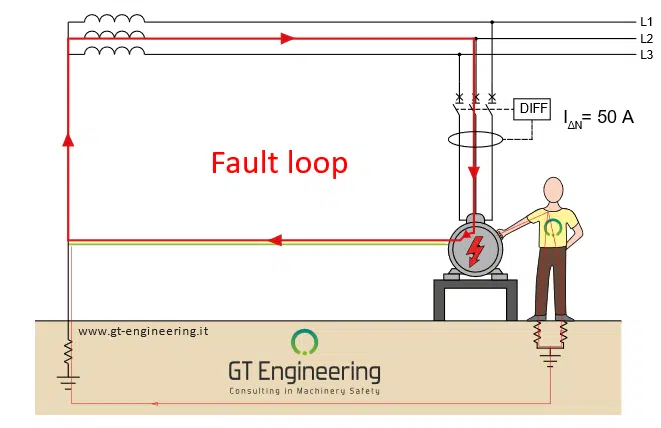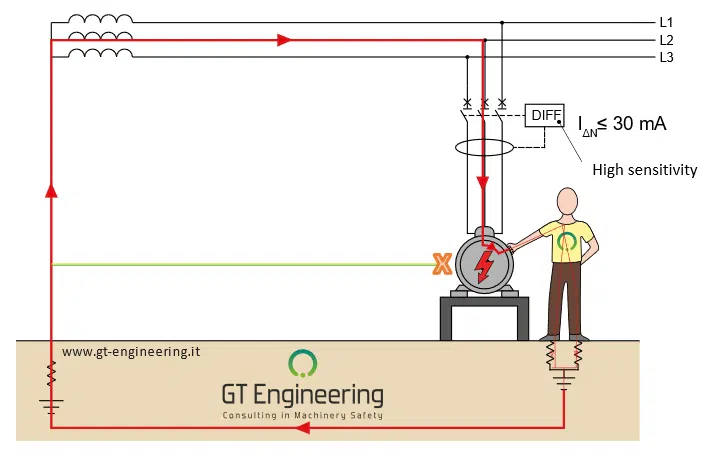Last edit: 10/05/2023
DOUBT
We know that high and low sensitivity Residual Current Devices (RCDs) are divided according to the current IΔn (nominal differential current of intervention) which triggers the protection, respectively ≤30 mA for the former and >30mA for the latter. But is that really the only difference?
CONSIDERATION
Residual Current Devices physically monitors the vector sum of phase currents and neutral, verifying that it is zero, as it should be in a properly working circuit; when this sum exceeds the threshold value IΔn of the protection, the switch triggers the protection, and the circuit is opened. From a theoretical point of view, in fact, a sum other than zero implies a ground fault, with relative current that generates the imbalance detected by the protection.
In the picture below, you can see an electric motor grounded in a TN system and protected by RCD.

In this configuration, protection by indirect contact is done by the grounding which creates a fault loop and by the RCD:
- The grounding creates a fault loop in which current can flow in case of ground fault.
- The RCD detects the current in the fault loop, opening the circuit instantly so as to safeguard the person touching the mass during ground fault.
The focal point is the coordinated action of grounding and RCD: without grounding, the low sensitivity RCD would not be able to detect the ground fault and would not trigger in the event of indirect contact.
So let us analyze a new scenario, in addition to the ground fault we also have a second fault: grounding is disconnected and because of that we have no fault loop.

In this case, as already explained, a common RCD does not defend against electrocution by indirect contact. It is in this scenario, with double failure, that the high sensitivity RCD has its usefulness. It is able to detect even the current that discharges by indirect contact, high enough to be dangerous for humans but too low to be detected by a common RCD. The high sensitivity RCD is therefore able to save the person even without grounding and fault loop. For the same reason, the high sensitivity RCD can be used as an additional protection for direct contact, for example in the case of damage to enclosures or conductor protection.
CONCLUSION
Therefore, even if low and high sensitivity RCDs have the same principle of operation and technically differ only in nominal differential current of intervention, in practice they have two different applications:
- The RCD “saves” human life only in presence of fault loop, with grounded exposed-coductive parts. The same function could be performed, for example, by a circuit breaker.
- The high sensitivity RCD operates on the ground fault when there is also a grounding failure (second failure), managing to safeguard by itself against electrocution.